Travels through Andalucia
![]()
Sevilla
From Cordoba, a short, fast train ride took us to the Estacion in Sevilla. It was raining lightly as we found our way to the bus stop and caught a bus to Plaza Encarnacion. We had called the Hostal Lis II to reserve a room so we headed there with a few map checks and checked in, stashed our stuff, studied the map and went out to find food. On a rainy Sunday, this was a bit of a challenge since many cafes were closed but we succeeded. We've long since learned that when traveling like this, one needs to adjust his meal timing and food choices to the situation.
Continuing on, we found our way to the Rio Guadalquivir (Sevilla is downstream from Cordoba) and walked along the esplanade (below left) and on to the City Centre where we discovered the massive Cathedral, the largest Gothic church in the world, with its awesome Giralda bell tower, once a minaret of the mosque that formerly occupied this site (below right).
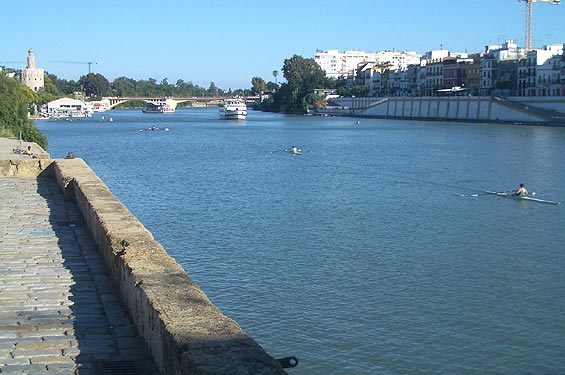
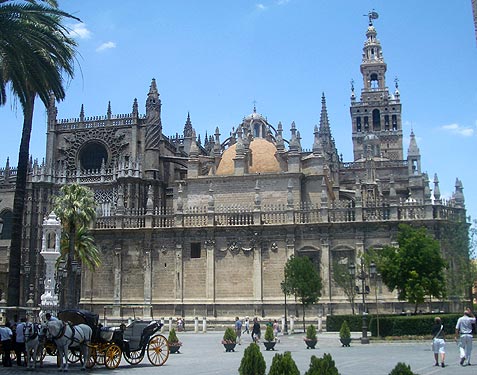
Across the Plaza de Triunfo stood the Alcazar, palace/fortress of kings both Moorish and Christian, and farther along, the Ayuntamiento (City Hall).
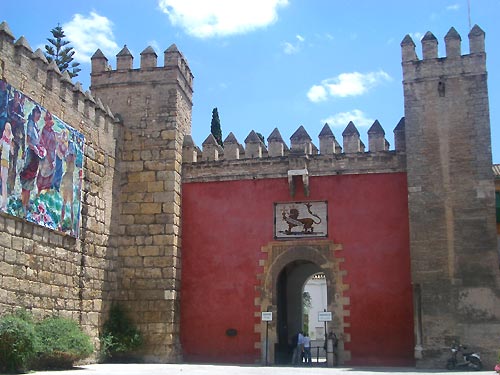
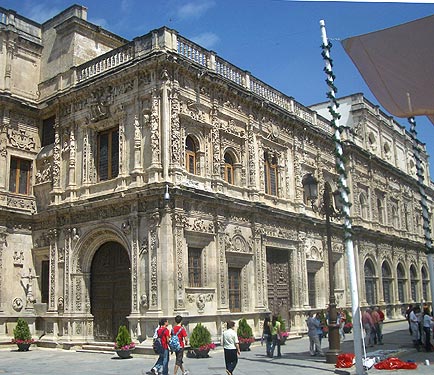
In the plaza behind City Hall we encountered an exhibit about water; ways to conserve it, how it is cleaned for drinking, and quantities used in countries of the world. What a wonderful way to raise water awareness!
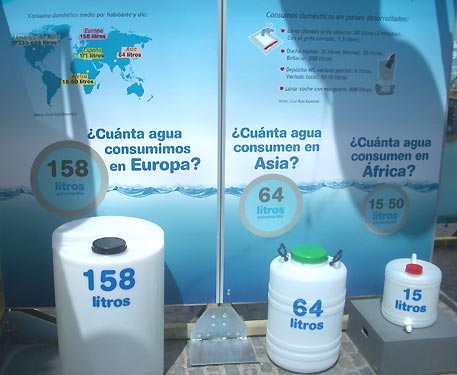
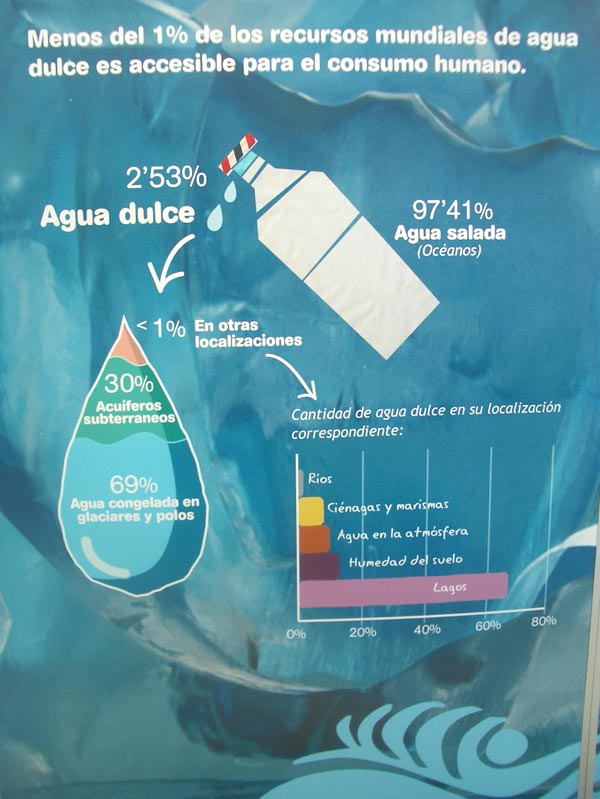
Most delightfully, we also discovered the tracks of the new light rail running from the newly completed station at Plaza Nueva (below left) past the cathedral and Alcazar along the now car free Avenida de la Constitucion. There were no trams yet, but we later found the shiny new trams all ready to go (below right) and learned this tram line is part of a new Metro system that is due to open in stages over the next year or two - good for them!! Later on we learn that the tracks end at the Estacion de Autobuses, which will become a multimodal transit center.
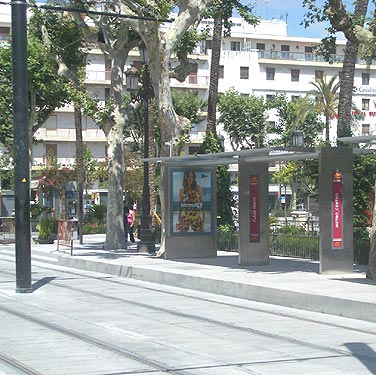
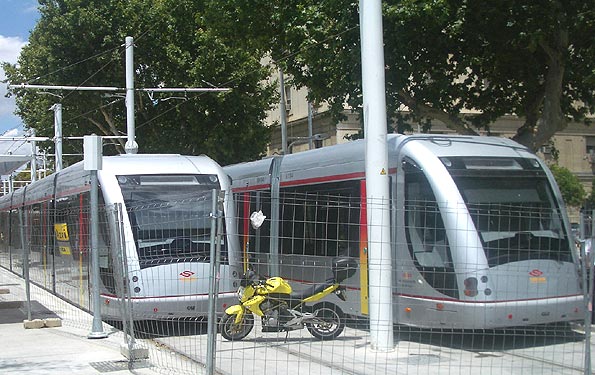
Continuing on, we strolled through Barrio Santa Cruz, noting a charm reminiscent of Barcelona's Barri Gotic, with narrow winding streets, entrances affording glimpses back to patios rich with greenery and flowers. Yet, clearly, this area has been overrun by tourists so we retreated back to our own barrio for a tasty dinner. Like Madrid, Sevillanos keep late hours with dinner after 9 PM but this cafe was pleased to feed us earlier!
The next morning, after a breakfast of cafe con leche and tostada con mermelada at Cafe Dona Carmen, our neighborhood cafe, just up the street from the Hostal, we visited the Turisme for maps and discovered that they share space with an Information Centre for the European Union and also for the Urbanism and Economic Development Department of Sevilla! We learned that the city has a population of 700,000 with another 460,000 in the rest of the metro area. The exhibits highlighted the construction of the light rail to open in September and then to be expanded to a full subway system in the coming years, the initiatives to provide workforce housing and education, and programs to encourage business development by building on the significant industrial base already in place. We realized that Sevilla was a city with big dreams!
Continuing our exploration, we returned to Plaza Nuevo to follow the new rail tracks through the city. After passing the Alcazar, the tracks turn past the Fabrica de Tabacos, a surprisingly large but elegant building, once a tobacco factory, but now part of the university (below).
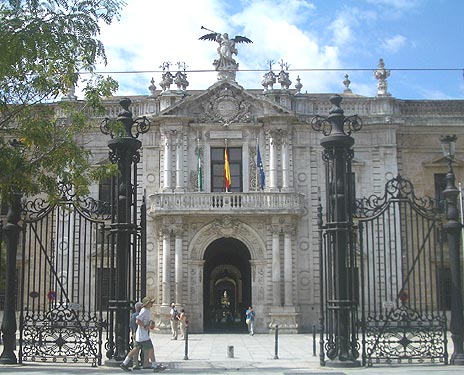
We decided to walk through Santa Cruz area again and stopped at a cafe but balked at the high tourist prices! We walked beyond the tourist section to another barrio and a cafe where we feasted on gazpacho and garbanzos con espinaca. It was time for a siesta! We rested a while, writing and reading. In the late afternoon, we walked through shopping streets to the Plaza de Armas, an old estacion, now converted to a mall with shops, cafes and a supermercado (below). We continued our walk on past the bullring, still actively used, and headed home.
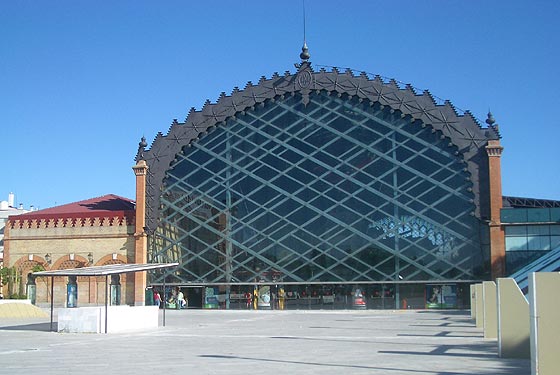
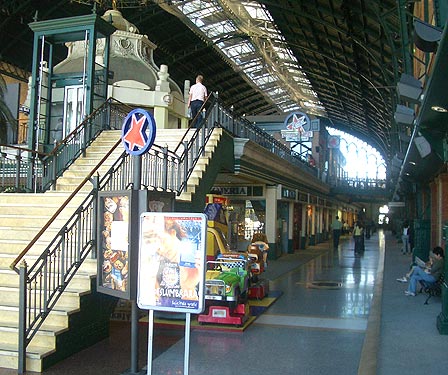
Next morning, we returned for breakfast at Dona Carmen's. They recognized us now! We took a bus to the Alcazar, joined the line for tickets, and entered through a large plaza (below left). Over the centuries, rulers of Sevilla have occupied the site of the Alcazar, beginning with the Romans, but the present structure is nearly all from the Christian period. The Christian monarchs employed Moorish artists and craftsmen for the construction of their palaces, leaving a legacy of Mudejar architecture that captures traditional Moorish designs and methods (below right). Their artistry was amply demonstrated in the rooms of the Alcazar, with geometric and plant motifs in tile, an elaborate wooden dome ceiling and horseshoe arch arcades.
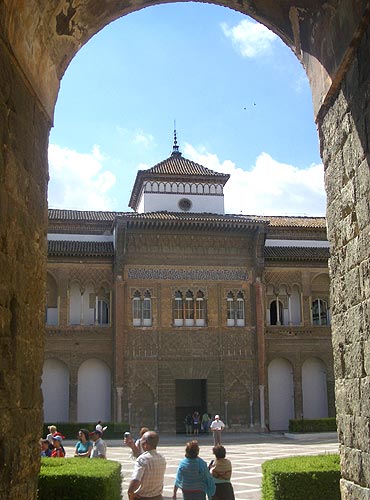
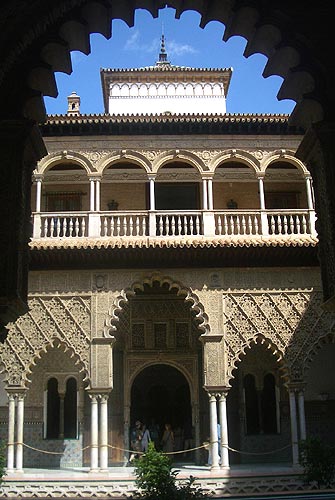
In one room, large tapestries hung on each wall. Our favorite was a map of the Mediterranean bordered by Spain and North Africa with south at the top as if one were looking from the north side of the Pyrenees over Barcelona and across Spain toward Gibraltar and Africa. The mountains and rivers, vegetation and cities, ships and storm clouds are all included, too! (below)
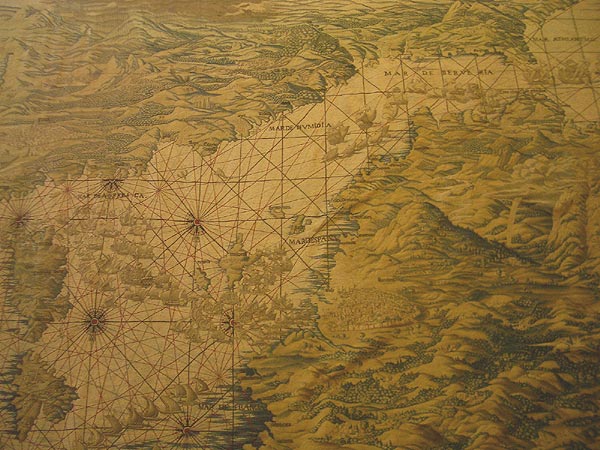
The extensive and lovely jardines offered a wonderful walk along paths between cypress trees, past geometric trimmed myrtles, water pools and fountains, among plantings of bright flowers.
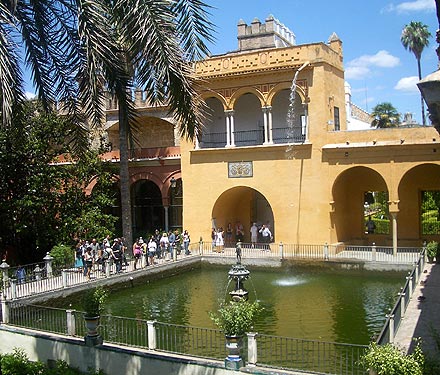
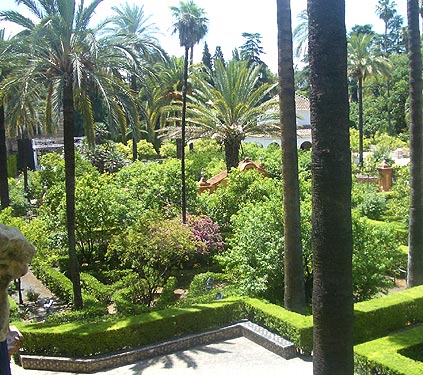
Boggled by all of this history, architecture and art, we took a bus ride to view other parts of the city, across the rio to Triana, a barrio of newer high density residential buildings with plenty of retail and commercial mixed in. From here, the bus continued to Cartuja 93, an extensive, modern science and technology park, and back across the rio (below left). We walked along the riverside and through a barrio of older residential apartments (below right), stopping for a cerveza at a friendly taberna, and on home. For dinner, we returned to Dona Carmen's. After several days of searching for meals, we were ready to take the easy way and just go next door.
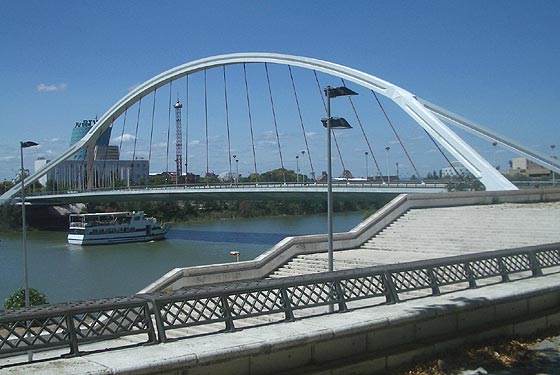
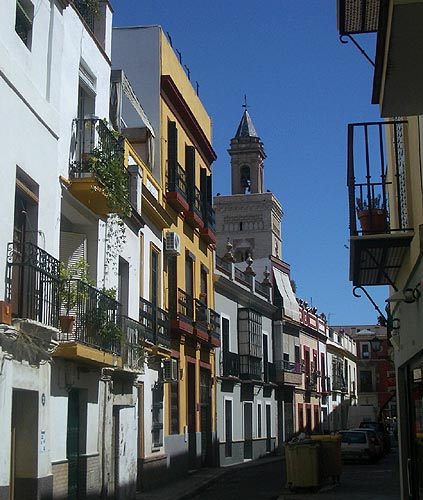
The next morning, we returned to the city centre to visit the Casa Lonja, a sturdy building where the Archives of the Indies, the documents of the Spanish empire, are kept. On display were copies of maps of the cities founded by the Spanish throughout the Indies, North, Central and South America. We were impressed that each city plan used a grid of interconnected streets enclosed within walls (the urban growth boundary?), including space for a central plaza, church and government buildings. We can only imagine the pleasure a student of Spanish history would find with the all maps and documents stored in this elegant building.
A short walk took us to Plaza Espana, a vast semicircular complex enclosing a plaza with fountains (below left) and decorated with maps and scenes for each region of Spain in tile (below right).
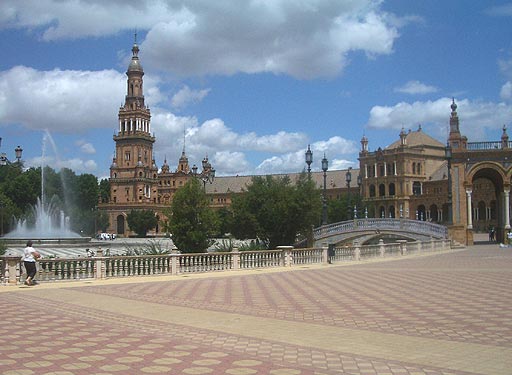
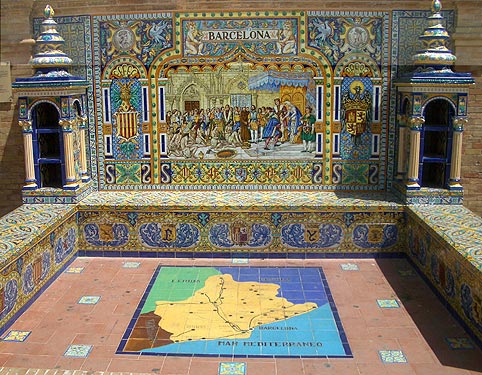
We next caught a bus to Plaza de Armas bus station and took a bus to Santiponte, a village on the outskirts of Sevilla. There lies an extensive archaeological site, the ruins of the Roman city of Italica, which we learned was an important Roman city in the 2nd and 3rd century AD (Emperors Trajan and Hadrian ruled the Roman Empire from here). We wandered about, exploring the ancient amphitheatre (below, top left), imagining the roar of the crowds, the fighting of men and lions, ball games and duels. Beyond was a grid of streets and villas (below, top right) with wonderful mosaic floors depicting birds, the gods, geometric designs (below, bottom left and right). After our visit, we stopped for a late lunch at a cafe across the street and then caught the bus back to Sevilla.
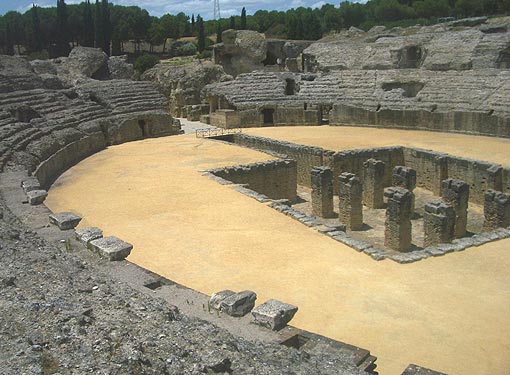

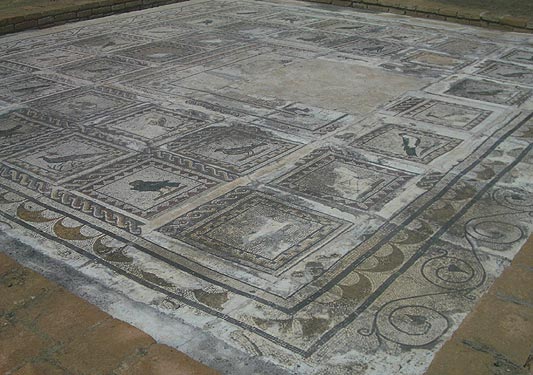

The next morning, after a last breakfast at Dona Carmen (below left), we packed up, checked out and took the bus to the main bus station (below right) to travel on to Donana National Park and Sanlucar de Barrameda.
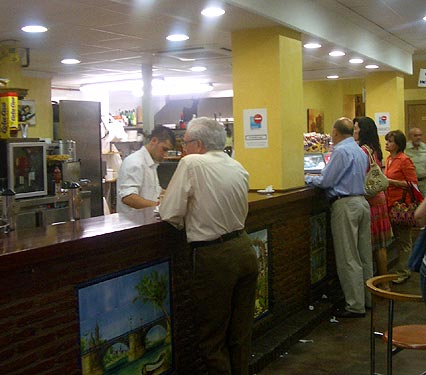
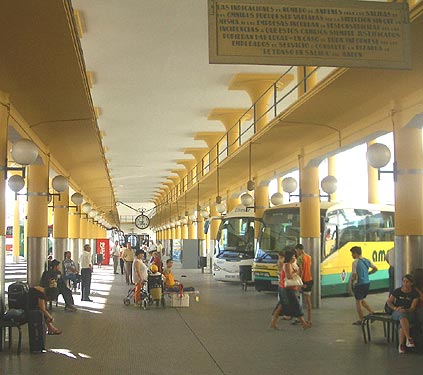
Click here to return to Our Travels in Europe - Summer of 2007 page
Click here to return to our Searching the World page
![]()